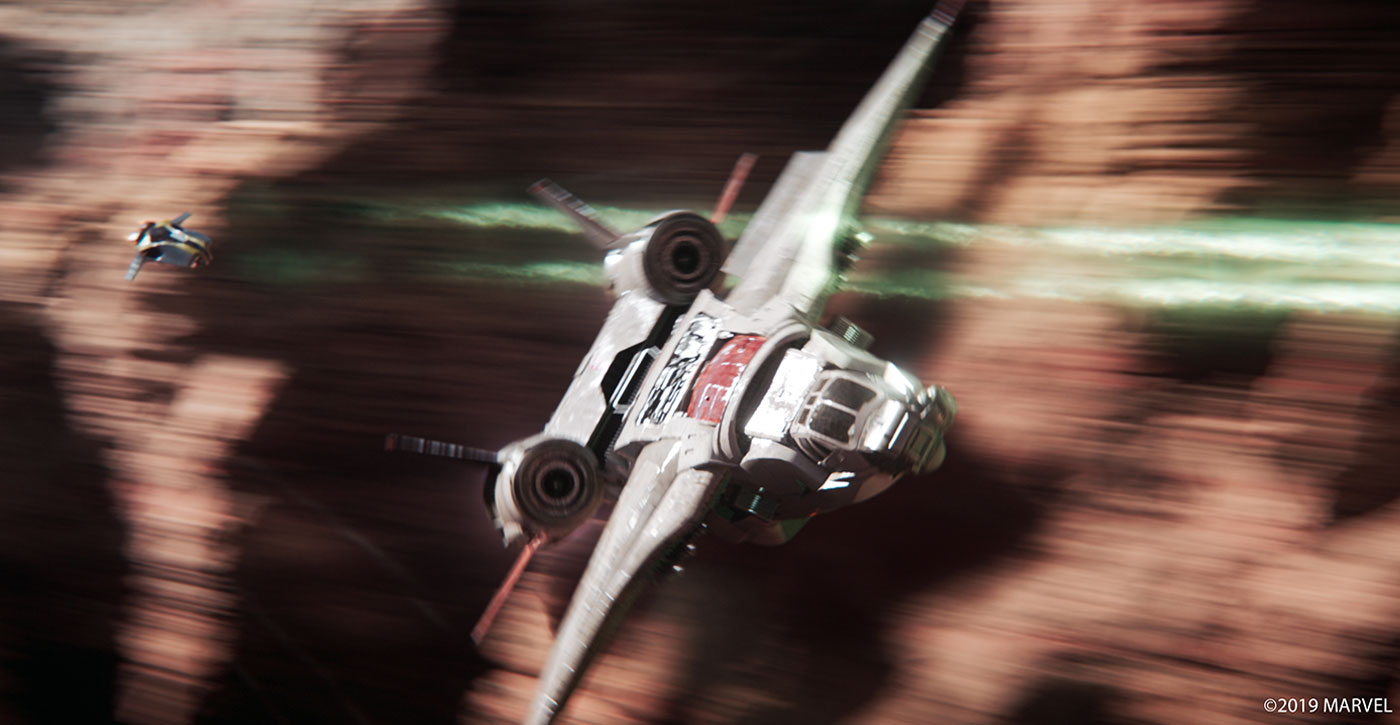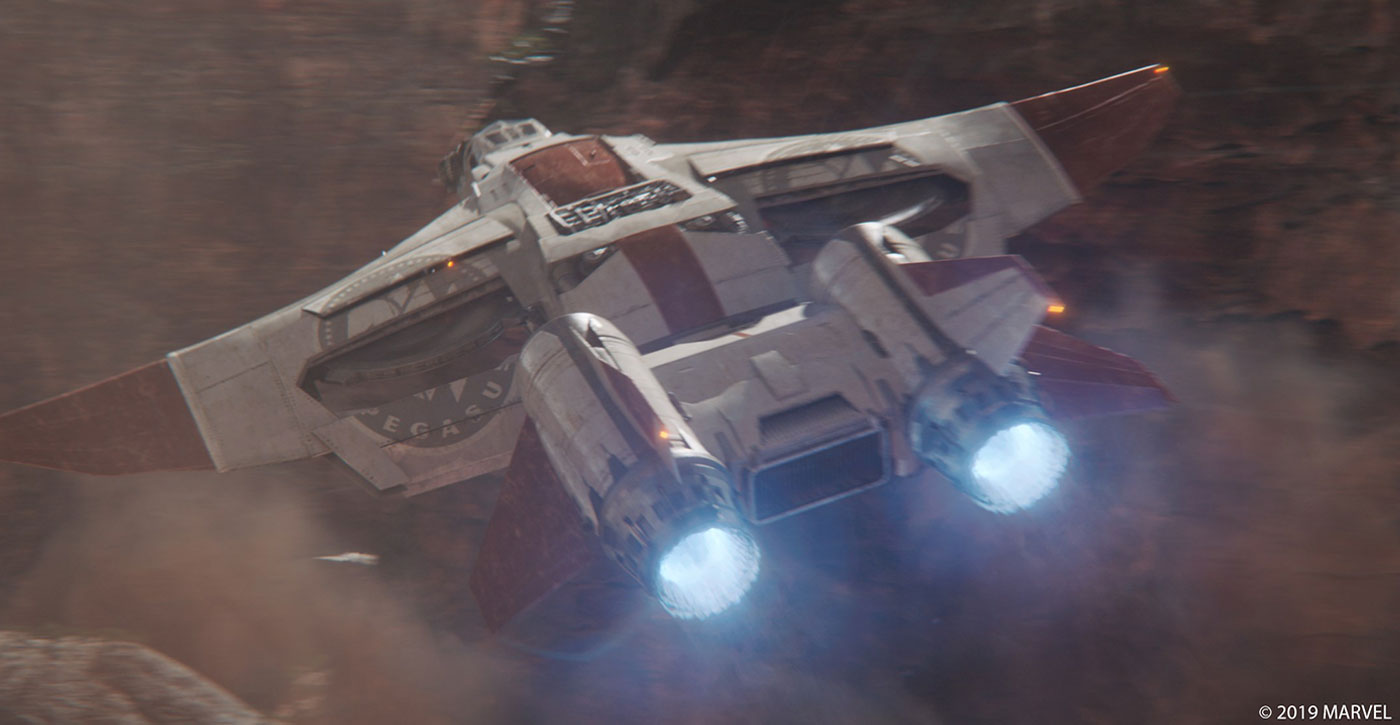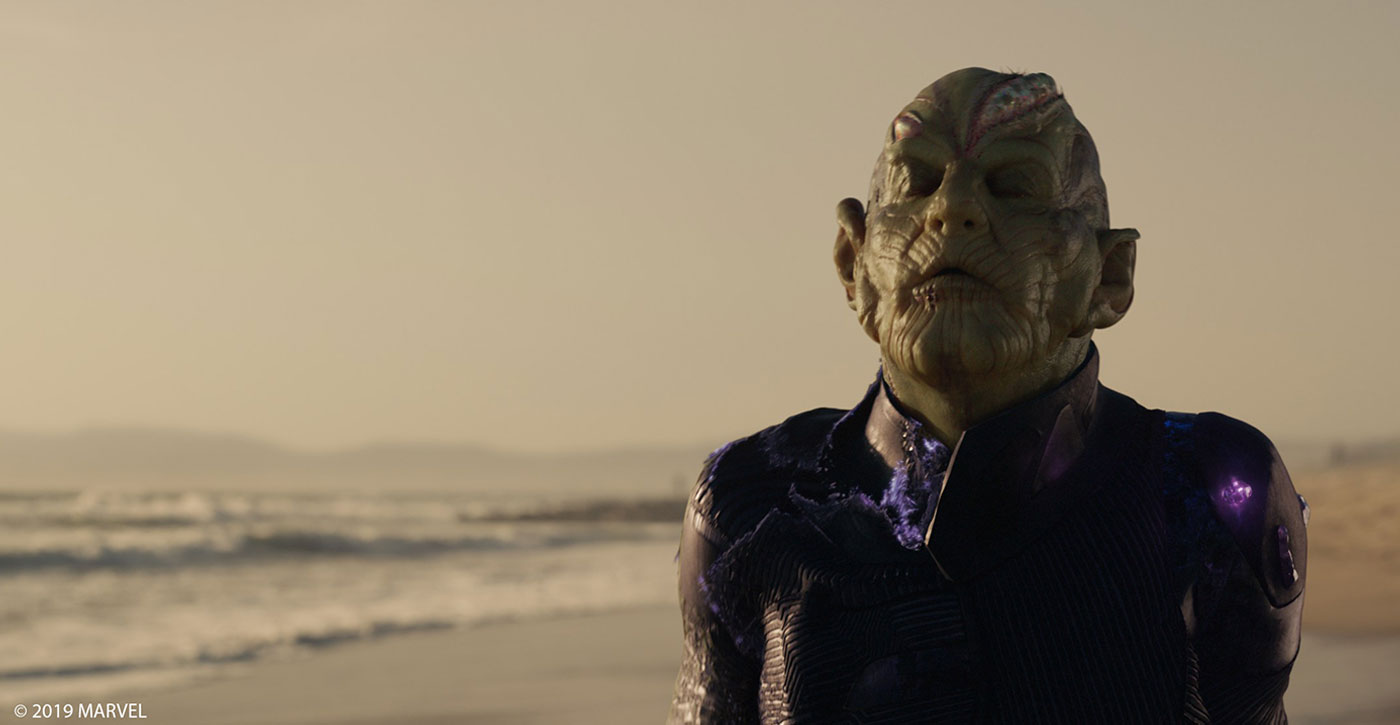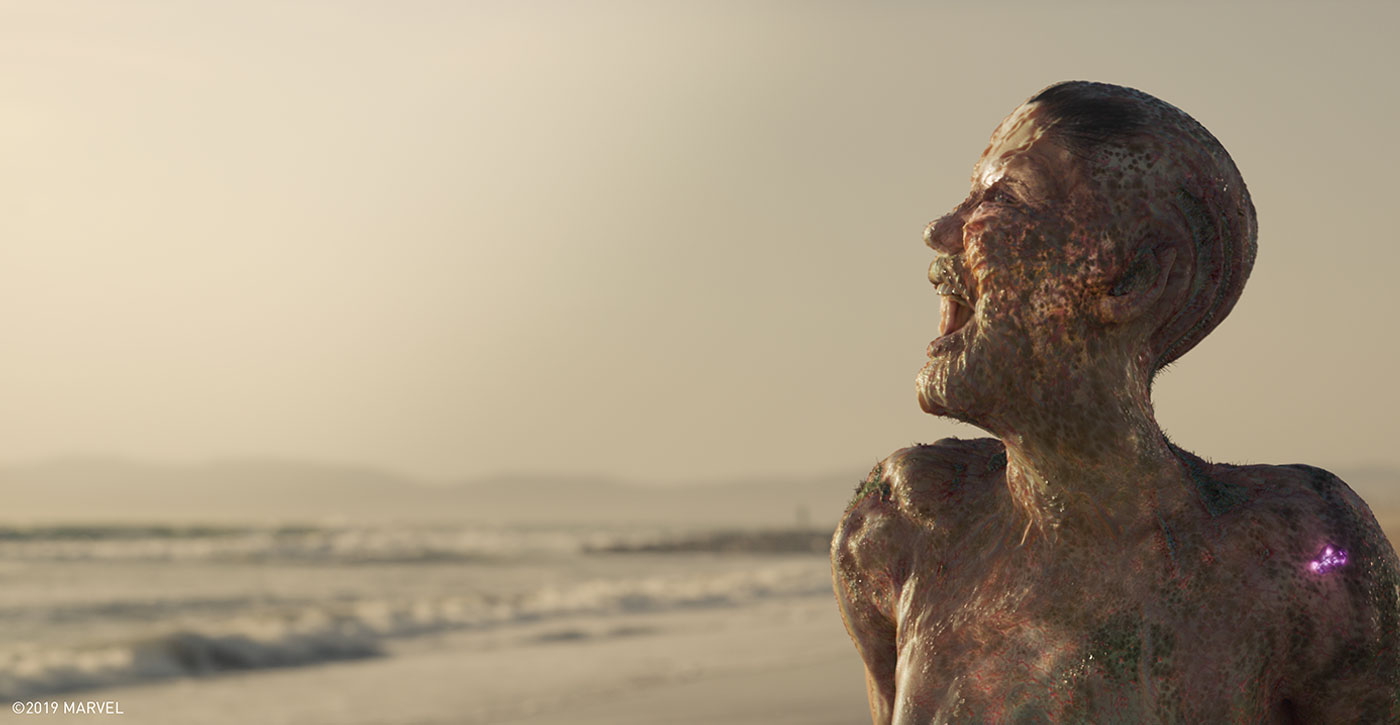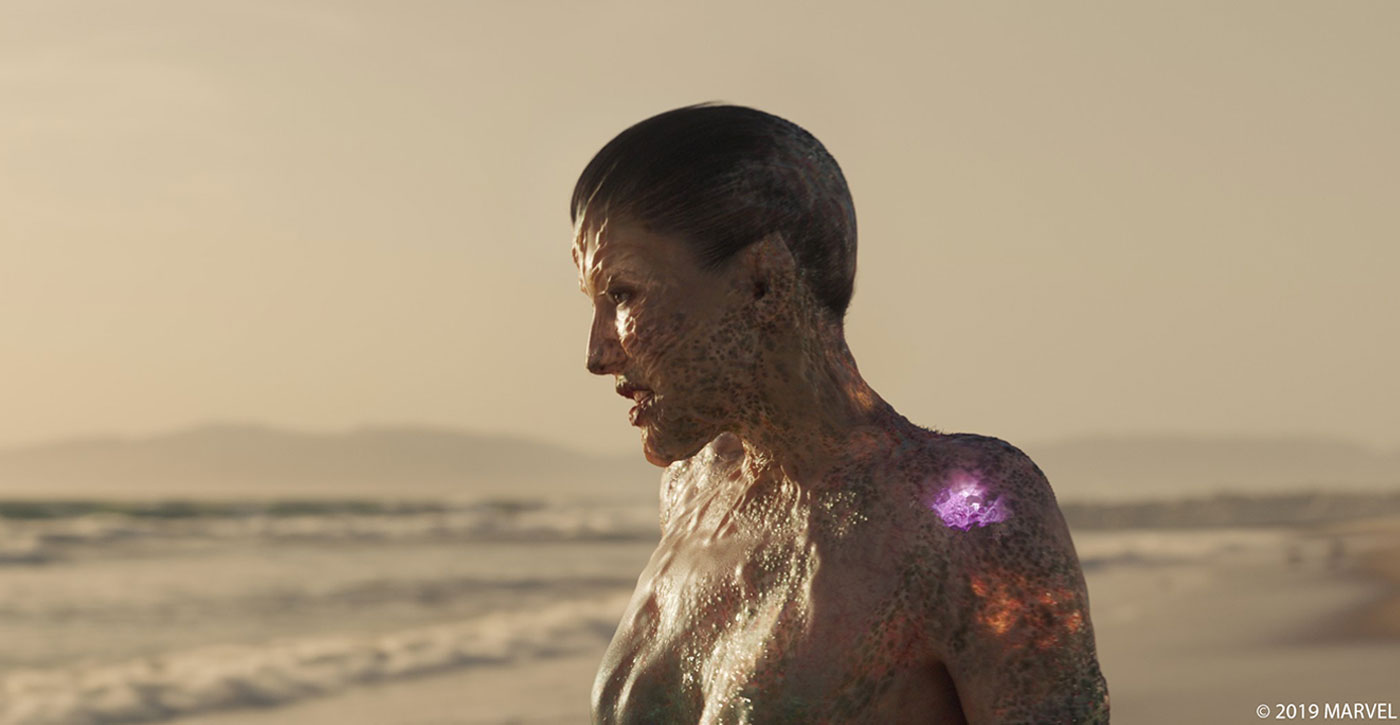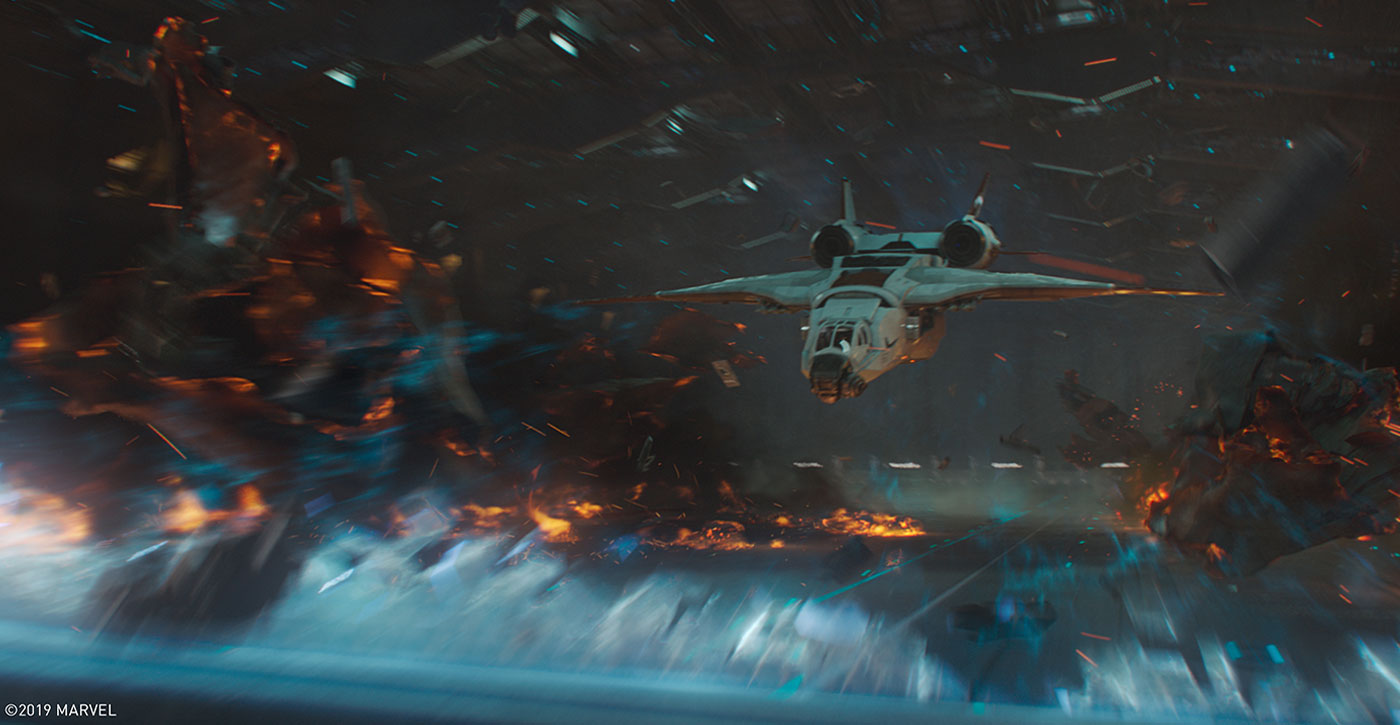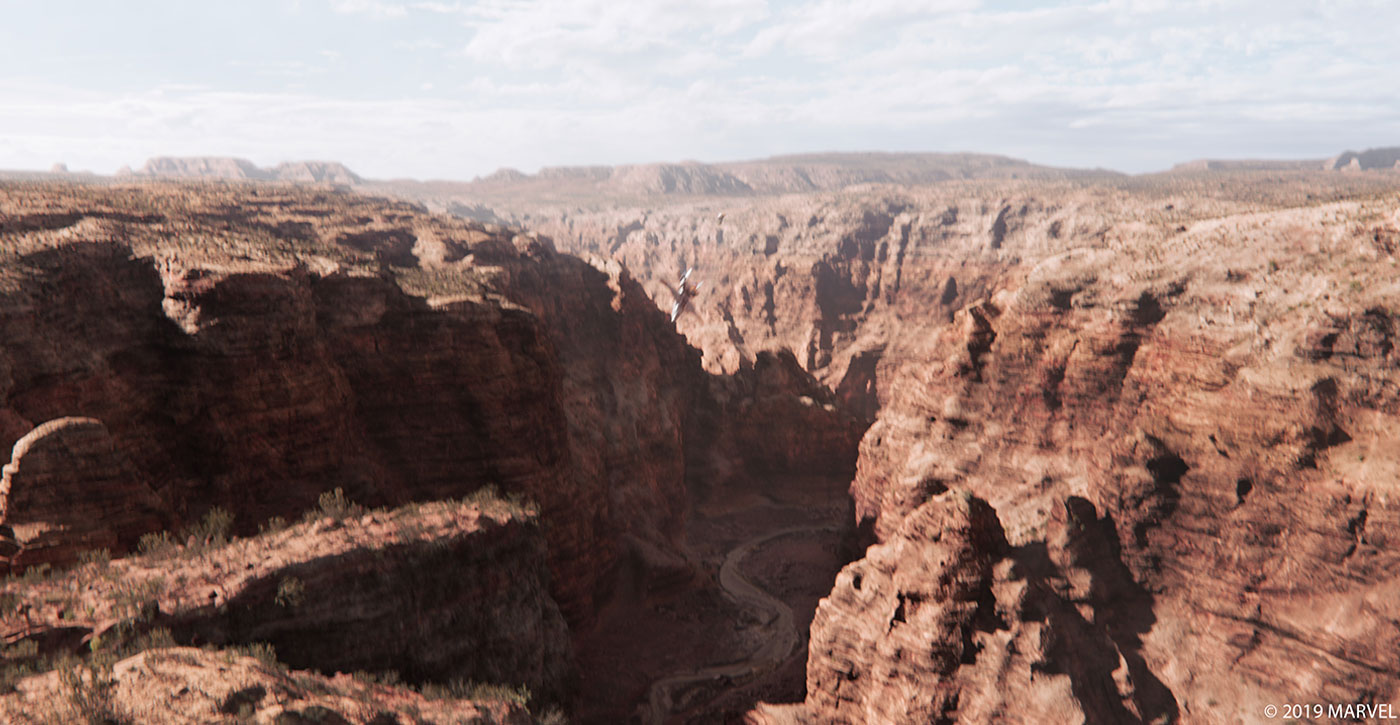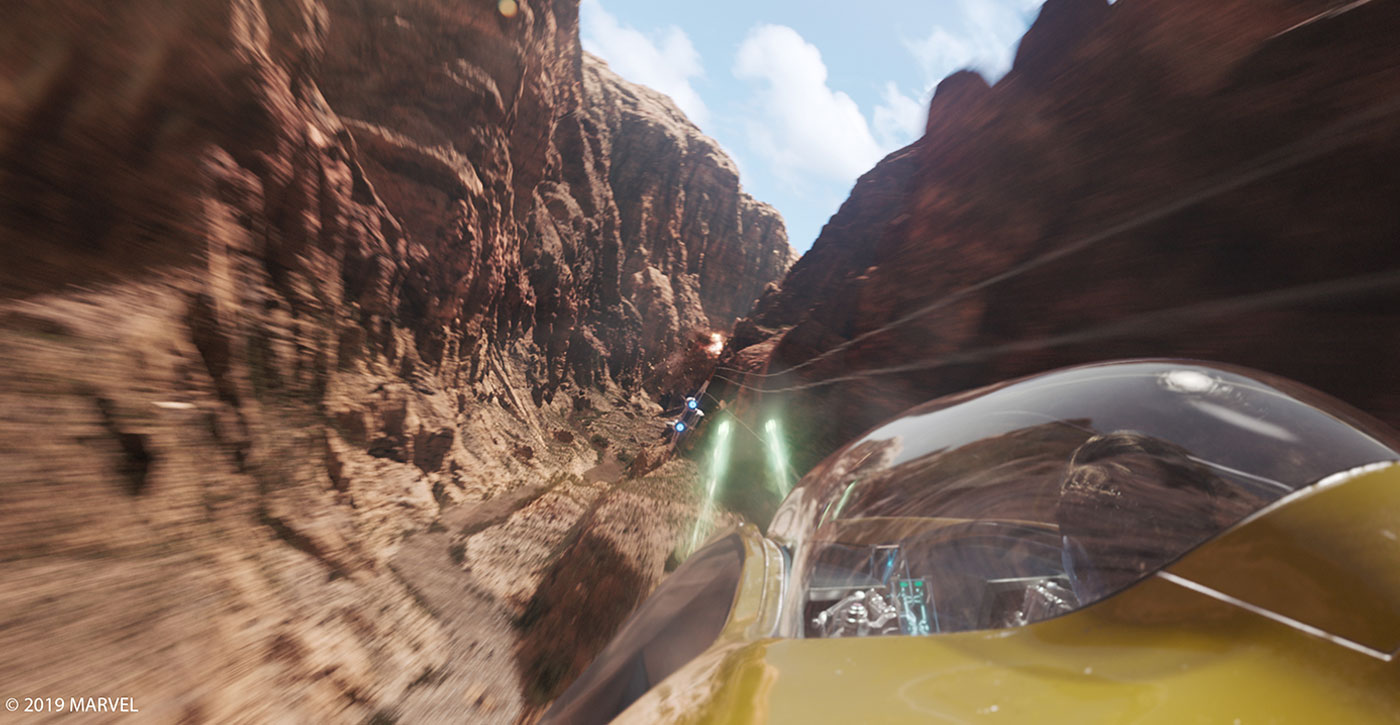In 2017, Dave Hodgins explained the work of Digital Domain on THOR: RAGNAROK. He talks to us today about CAPTAIN MARVEL.
How did you and Digital Domain get involved on this show?
Digital Domain has made some pretty incredible transformations in movies over the years. Marvel is a wonderful partner and came to us for the epic Skrulls transformation work they needed to have done on Captain Marvel. They are familiar with what we’ve done before with our facial transformation and performance work and thought that we’d be a good fit for this project.
How was the collaboration with directors Anna Boden, Ryan Fleck and VFX Supervisor, Christopher Townsend?
Chris Townsend was our main contact on this show, and he is delightful. Chris served as an ambassador to the entire CAPTAIN MARVEL team filtering ideas to us to achieve the final looks.
What was their expectations and approach about the visual effects?
As far as the Skrulls transformation work, everyone wanted it to look very natural and organic. Rather than having digitized transformations, the work was meant to look as it would in nature. Think of the way a snake would naturally shed its skin or the way a chameleon might change color. They wanted the process to look painful but not overly gross.
How did you organize the work with your VFX Producer?
We split the work across our Los Angeles, Vancouver and Hyderabad studios.
What are the sequences made by Digital Domain?
We handled all of the Skrulls transformations, the hangar escape from Mar-Vell’s ship, the environment for canyon chase sequence and cockpit shots.
How did you work with the art department for the Skrulls transformations?
Initially, we were given some concept art. We worked with Nick Lloyd who provided some concepts of the transformations and we created a round of stills and progressions to establish the look. We put together this awesome and grotesque reel of references for natural transformations that included high-speed photography of creatures shedding skin, mushrooms and fungi growing, lobsters molting, insects and the sloughing of their exoskeletons, squid chromatophores changing color, closeups of what the skin does while changing form.
Did you receive specific references and indications for those transformations?
We had received artwork of what the Skrulls themselves looked like, and while we talked through what they liked, they allowed us the chance to explore more before they solidified the look. There was a debate about how gross it should look and how sterilized or unsterilized it should be. It was a deep exploration, and we went through at least half a dozen looks. We wanted to utilize the grooves on the Skrull’s head as a natural place for the transitions to start. This added a visual complexity to the transition where spikes and hairs in the fold pulled apart and this sort of white substance pushes the transition out of the Skrull’s skin.
Can you explain in detail about the creation of the Skrulls transformations?
We started doing development in 3D and outside of the shot context because we hadn’t received scans yet. We started out using a generic man and woman that we were trying to transform from one to the other and tried to test different techniques of doing this like using particle effects. As we got plates and models, we then switched and starting working on the real shots.
On certain shorter shots, we went from conceptually practical footage to a CG character that looked just like the practical footage and then blending that across to the second character and then going back into the practical footage again. With shots like the surfer girl transformation, it was long enough so the transition between the two characters was plenty of time for us to introduce performance elements. We did some research into other films that showed a physiological reaction to the transformation and tried to make it look a little more painful without looking too disgusting. For the surfer girl shot, we needed to do a full match move animation, which we ended up doing all that by hand.
There was so much going on in the fx side and ultimately, the transitions became a three-part process with skin, hair and clothing. The skin pulled apart and kind of bubbled into a new shape, the hair needed to grow out or back into the skull and the clothing needed to use some sort of nanotechnology that disintegrated into a new uniform. Rendering everything was definitely the most difficult part of the transformations.
Can you tell us more about the shaders and textures work for the various layers?
There were base skin textures for the Skrull side and Human side based off of high-resolution body scans and photographs. We dialed those in and created shaders to match the actors as close as possible as a first step. The layers of textures during the transformation are very dynamic and are mostly Houdini procedural networks that evolve as the transformation spreads. There are layers and layers of veins, subcutaneous glow, more veins, skin bubbling patterns, larger break-up textures and control maps for comp to control the blends.
How did you handle the animation of the transformations?
The Skrulls are kind of these lizard-like beings and they have these lines on their forehead that production wanted the skin to sort of split along so that makeup was somewhat integral to how they transformed. These lines were a natural place for the skin to split apart revealing these little fibers that appeared like a seam opening up.
These transformations are seen in close-up. How does that affect your work?
In the closeup shots we just needed to make sure there was extra levels of displacement and textural detail to the transforming surface so that it wasn’t too fluid or blobby looking.
How did you manage the lighting challenges?
Lighting was driven primarily by the HDRs collected from set. Some sets like Torfa were so foggy that it was easier to reconstruct the lights in CG. In the canyon chase we had an afternoon desert lighting scenario for an all CG canyon environment. Our DFX Supervisor Hanzhi Tang had incidentally been on vacation in Death Valley and shot some HDRs during the same time of day that was being used in that sequence. That ended up being used as our base lighting rig for the canyon chase. For the beach transformation, he also went back the following day to the location when all the crew and equipment was gone and shot a clean sunset HDR which was used in the shot. These custom HDRs have a dynamic range of about 28 stops which makes daylight renders much more accurate.
Can you explain in detail about the Quad Jet creation?
We received the shared asset for the Quad Jet from ILM, Trixter and others and detailed it up for specifically for angles seen in our sequences and then shared that back with the other vendors if they needed that detail. Specifically the interior engine details and close ups on the wing and guns.
How did you create the explosion in the hangar?
Production built a quarter set of just the corner of the hangar, basically the first ten feet and a couple of the hangar bay doors. Everything else we needed to extend upwards and out to the rest of the hangar. They also built an interior mockup of the quad jet with the exterior to be replaced by us. After the escape to the quad jet it’s an all CG environment and then there’s the FX explosion which was difficult because there were a few stages to it. There was the initial tracer fire and the damage followed by a series of offset explosions. The cadence of the explosions would show multiple smaller explosions within the larger one. We used GPU rendering to handle this.
A big chase happens in a desert canyon. Can you tell us more about your work on it?
The chase came to us just before Christmas and we were fortunate that they had some great previs and not a whole lot changed shot-wise from that. We were able to use our high-quality anim renders which helped us to final shots fairly quickly. We also did some research and gathered reference of how larger jets would fly. There are some crazy maneuvers in that canyon that a larger jet really couldn’t achieve so the visual balance of trying to make things look exciting with very large heavy vehicles required us to bend some of the rules a little bit but it turned out really well.
How did you create the vast rocky environment?
We inherited a photogrammetry pass from production after they flew a helicopter around the Paria Canyon in Utah and used that to create the base model for our canyon. We extracted a pretty high-res model of the canyon and made a few modifications to create that long v-shaped valley that they’re flying through. Our team added a stream at the bottom of the canyon. Our environments department did a really beautiful job on procedural rock shading and another two levels of detail on top of the scan. Then the FX department came in and added dust as they flew along and shot lasers at things on the canyon wall. Also, our team was able to keep the scene fairly light through instancing. We used a new procedural scattering system to add millions of trees, plants, bushes, rocks and pebbles to the canyon.
Which sequence or shot was the most challenging?
The Skrulls transformations were the most challenging because we needed to establish the look, timing of the transformations, and there was a lot of data to prepare for the effects team.
What is your favorite shot or sequence?
There’s a favorite in each sequence. Definitely the Skrulls transforming into the surfer girls sequence, the exiting shot for the hangar escape’s sequence, the explosion back down to earth and the barrel roll in the canyon chase sequence.
What is your best memory on this show?
We had a shoot day at the beach in El Segundo and spent the day waiting for the sunset. It was the first day on the job and we had a beach day. That’ll probably never happen again.
How long have you worked on this show?
April 2018 – end of Jan 2019.
What’s the VFX shots count?
More than 125 shots.
What was the size of your team?
Approximately 100 artists.
A big thanks for your time.
WANT TO KNOW MORE?
Digital Domain: Dedicated page about CAPTAIN MARVEL on Digital Domain.
© Vincent Frei – The Art of VFX – 2019

